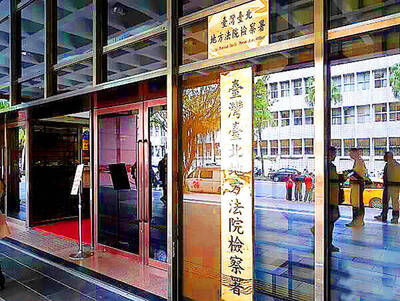The recent trip by US President Clinton to South Asia has renewed international attention of the security problems in the region, in particular the ethnic, religious and geopolitical conflicts between the two newest nuclear powers -- India and Pakistan. However, China, another big nuclear power whose border sprawls along the Himalayan range in South Asia, is a factor that should not be overlooked.
The great escape of the Tibetan spiritual leader, the 17th Karmapa Lama, to India two months before Clinton's visit has increased the tensions not only between India and China, but also between the contending factions among Tibetan Buddhists in the Himalayan region. The issue of the Tibetan exiles represents an another unpredictable variable affecting stability in South Asia.
Given the significance of the flight of the boy lama, named Ugyen Trinley Dorje, our two-person news team -- myself, a Hong Kong-based journalist and Prakash Khanal, a veteran Nepali environmental reporter -- recently retraced the Karmapa's route starting from the Tibet-Nepal border crossing Nepal all the way down to the Nepal and Indian border during a two-week investigation. An effort has been made to find out the different forces behind the boy lama's escape and its implications to the security in the region.

Our findings on the ground contradict the majority of Western reports, which have tended to be ideological rather than factual. What we discovered is that the lama's flight had been meticulously planned to throw the Nepali police and journalists off the track. It was speeded by a helicopter operator -- with an American owner -- and made possible by an extensive network among the Tibetan exile community closely linked with the government-in-exile in Dharamsala. Suspicions of an organized plot thickened when the Tibetan community in Pokhara, Nepal, disclosed that the Karmapa's sister did not arrive together with him, but had appeared in Pokhara three weeks earlier.
On Jan. 3, according to extensive interviews with the locals, Nepali journalists and police officers were alerted that the Karmapa was in Kathmandu, the capital of Nepal. Though their search was in vain, the alarm provided the first indication that the boy lama had escaped Tibet via Nepal.
The escape route
The Karmapa settled on an indirect route to India, through the forbidding landscape of Mustang, the northern remote region of Nepal that was the stronghold of Tibetan guerrillas, as well as the CIA's base in the area, until the 1970s. Our team picked up the Karmapa's trail in Pokhara, a resort at the foot of the Annapurna range. There, a Nepali businessman traced the escape route, based on his in-depth debriefing of the pony drivers who had assisted the Karmapa.
As the Karmapa and his three aides approached the border in two Landcruisers on New Year's Eve, they were being chased by Chinese police cars. They abandoned the vehicles and escaped by foot into Nepal. As revelers around the world rang in a new millennium, the Karmapa fled Tibet.
Just inside the Nepali boundary, along the bank of the Mustang Khola river, a tall, bearded Westerner was waiting for the Karmapa. This Westerner had hired local guides who had brought eight ponies for the journey across the northern half of Mustang, where there are no roads for motor vehicles.
The pony caravan pushed ahead for two days nonstop in subzero temperatures through the lunar landscape of Mustang, once the Kingdom of Lo. By morning, the Tibetan party was on the trail to Jomsom, the Mustang state capital, which is connected by a paved road to Pokhara and then India. Instead of going directly to Jomsom, however, the pony caravan turned abruptly eastward onto a trailhead below Muhila Peak, northwest of the monastery in Muktinath. The Karmapa's party made the grueling climb to the 5,416-meter-high crest of Thorang La pass.
This dangerous evasion was necessary because the Nepali Government Headquarters for Mustang was located in Jomson, and the Nepali police were waiting to apprehend the Karmapa and his party for deportation back to Tibet.
Annapurna Rendezvous
After crossing Thorang La, the Karmapa's party descended toward villages near the foot of awesome Annapurna, at 8,091 meters the second-highest peak in the Himalayas. The entourage spent the night of Jan. 2 in the village of Manang Pedi, altitude 3,535 meters.
Long after sunrise, at about 11am Jan. 3, the Tibetans and their guides spotted what appeared to be a snowflake fluttering against of the rock face of Annapurna. An Ecuriel air-rescue helicopter, painted blue and alpine white, was approaching from the southeast in a wide arc around sacred Fishtail Peak.
According to our source in Mustang, two Americans and two lamas clambered out of the helicopter to greet the Karmapa. With the human cargo safely aboard, the helicopter blades whirled like a prayer wheel, levitating the Karmapa into the clouds above the Annapurna range and the actual destination, Pokhara.
Missing Flight Records
At Pokhara Airport, a control tower officer showed us the helicopter flight records for Jan. 3. A hand-written report showed that Fishtail Air was the only local service to dispatch helicopter flights on that day. The air-control officer explained, "There was no other helicopter flight recorded except for Fishtail company. On the 3rd of January, our record shows that Fishtail sent two helicopter flights out from this airport. They claimed that one flight was for sightseeing and the other for rescue purposes."
The first flight departed at about 11am and returned to Pokhara Airport at noon; the second at 12:45pm and returned an hour later. At US$3,000 for a round-trip, the Ecuriels operated by Fishtail Air are more expensive than ordinary tourist-class Kawasaki helicopters.
Fishtail Air is an American-Nepali joint venture and the only air company in Nepal with foreign ownership. Later, in Kathmandu, an executive with a major Western aircraft company which supplies private aircraft to airlines across the Asia-Pacific region, expressed surprise on hearing that the Karmapa had flown aboard a Fishtail Air helicopter.
The aircraft executive immediately blurted out: "Oh, does this mean that the CIA was involved in the Tibetan boy's escape?"
The mystery was enhanced when we checked with Fishtail Air's head office in Kathmandu. The local staff told us that the flight record for Jan. 3 was missing. The staff showed us the records for the day before, the day after and every other day in the month. The flight record on the day of the Karmapa's flight were nowhere to be found.
All Western news accounts have failed to mention the role of Fishtail Air in this escapade. Only a report on ABC.com mentions that a Westerner was involved in the trek through Mustang. According to a source in the Nepali government, who asked for anonymity, a US State Department official, who had been deeply involved in the Kosovo and East Timor interventions, approved the escape plan in October.
A Tibetan monk in Pokhara revealed that the Karmapa spent a few hours in the compound of the Hotel Annapurna, built by the Tibetan guerrillas with CIA funds in the early 1970s and is now operated by the exile government. The Karmapa did not linger long enough to dine at the lakeside Lhasa Restaurant where his sister, a nun whose head was "shaped like an egg," had had lunch three weeks earlier in Pokhara on her way to India, according to the owner and his staff.
From Pokhara, the Karmapa was taken for a five-hour drive south to Lumbini, the birthplace of the Buddha. A professional people-smuggling group, which has often helped smuggle Tibetan exiles from Nepal to Dharamsala, took the Karmapa to the Indian side of the border, where a car was waiting to whisk him off to Gorakhpur and then Lucknow.
In the following night, another American -- a staff member of a NGO group controlled by a leading US Democratic Party donor -- led the teenage lama to a waiting private car that whisked him off to Dharamsala.
Sikkim: a tinderbox for political unrest
The Karmapa had left a note in his monastery in Tibet, saying that he was going to Rumtek monastery in Sikkim, northern India, the seat-in-exile of the Kagyupa sect of which the Karmapa is the head. However, instead of going to Sikkim, he and his entourage turned up in Dharamsala, where the Tibetan government-in-exile is located.
In fact, we were told by our source that the rumor about his escape was spread around in the followers of the Kagyupa (Karmapa sect) community in Taiwan.
Chen Li-an (
According to Khenpo Rinpoche, former abbot of Rumtek monastery, a Sikkimese delegation visited Tibet in November to seek permission for the Karmapa to travel to Rumtek. On their return to Sikkim, the monks constructed a helipad outside the grounds of Rumtek monastery to receive the Karmapa from an airport in eastern Nepal.
The sealed vault of Rumtek contains the Black Crown, the chief symbol of authority for the Kagyupa school. A struggle to possess the crown has split the Kagyupa sect into two bitterly opposing factions, one led by Tai Situ Rinpoche, the mentor of the Tibetan boy, and the other headed by the Sharmapa, the order's second-ranking monk.
This sectarian feud makes Sikkim a tinderbox for Asia's nuclear powers. Sikkim was a Buddhist kingdom before it was annexed by India in 1975. Powerful Sikkimese clans, however, have never accepted Indian rule and tend to turn to China and Taiwan for support, since neither recognize Indian sovereignty over Sikkim. The appearance of the Karmapa to Rumtek would be used as a rallying point for independence, because 80 percent of Sikkim's indigenous population follow the Kagyupa sect.
Late last year, as its relations with India started to improve, Beijing was planning to support the Karmapa's visit to Sikkim. The possession of the Black Crown by her own chosen 17th Karmapa was in China's interest, since it would help China consolidate the faith of Tibetan buddhists in Tibet and legitimize the Chinese rule in the area. Taiwanese buddhists were eager to step into the situation, and provided huge donations to Tai Situ Rinpoche, according to sources in the Kagyupa school.
"Sikkim could quickly turn into another Kashmir," said the former abbot Khenpo, who was forcibly evicted from Rumtek in 1992 by armed supporters of Tai Situ Rinpoche.
Kashmir is an apt comparison because Kashmiri rebels and Islamic militants, who frequently launch anti-Indian terrorist operations from Nepal, have called for the creation of a federation of new Himalayan states. Ethnic violence in Sikkim, involving Tibetan refugees, would attract international calls for a Western-led humanitarian intervention similar to the ones in Kosovo and East Timor.
In Dharamsala and further afield, the rising of the militant movement had already begun to catch the attention of South Asia watchers. They point out that there is a strategic reason for the hard-liner independence supporters in Dharamsala, to back Tai Situ Rinpoche's plans for Sikkim. With India and China drawing closer together, the exile government's days in Dharamsala seem numbered. An independent Sikkim would give the Tibetan militants a new base of operations along the Tibetan border.
In my last interview with the Dalai Lama in Dharamsala in 1994, he frankly told me his worries about the growing radicalism among the young Tibetans in exile which he feared could be beyond his control. Other observers also expressed their fear of the militants, who might be too ready to go back to the Cold War style of guerrilla confrontation.
The Sharmapa, who supports a pretender for the seat of the current 17th Karmapa, says that Ugyen Trinley Dorje made his long journey only to end up in captivity. The senior Kagyupa monk concluded: "The poor boy is a guitar, and whoever has him can play their own tune."
The battlefield
of the 21st century
On the other hand, we learned from a secret Indian police report of 1997 that the Tai Situ camp had attempted to smuggle the Karampa out of Tibet as early as 1997. In the report, It was said: "It is suspected that Ugyen Thinley (12), Tai Situ's candidate, who has been recognized by the Chinese authorities as well as Dalai Lama, may be smuggled into the country. It is, therefore, requested that all ICPs under your jurisdiction may please be alerted accordingly. If traced, may please be informed by quickest possible means quoting memo no.28/0/97(35) dated 26/06/97 under the intimation to us."
Furthermore, a confidential cabinet report on May 25, 1997 shows that the Indian cabinet has also been on a high alert to the Tai Situ camp as a consequence of their attempt to take control of Rumtek monastery by force in 1996 and their increasingly violent actions against the other contending party, the Sharmapa camp. The Indian Government is deeply concerned over the split among Tibetan Buddhists in its territory, which may subsequently lead to more violence. The presence of the 17th Karmapa in India could well indicate the potential for intensified conflict by the Tai Situ camp in the near future.
India is especially nervous about any such moves because the Tibetan exiles represent an irritating source of tension with China, which has not yet taken sides on the Kashmir issue. Himachal Pradesh, the state where Dharamsala is located, is next door to Kashmir, where the Indian security forces have been fighting Islamic insurgents backed by Pakistan, a traditional ally of China.
The involvement of the US in this ethnic and geopolitical tinderbox has complicated the situation. The US Congress provides US$2 million a year to the Tibetan exile government and is stepping up its rhetoric on the Tibet issue. This year, the US military has started to extend its presence in Nepal through a UN training program for South Asian peacekeepers. Along with US legislators and other military officers, Admiral Dennis Blair visited Kathmandu in January. Now President Clinton's visit to South Asia last month has been taken to represent a tilt towards India, a stance that could easily backfire.
As the meeting point of Asia's three nuclear powers, the Himalayan region could easily explode. A news producer with the German state television network explained to me in Kathmandu: "The Himalayan region could become the strategic battleground of the 21st century."
With our long, exhausting journey at its end in Buddha's birthplace, we marveled at all the deceptions that littered the Tibetan teenager's crooked trail and the false reports repeated by the world's press. The tolling of bronze Buddhist bells resonated across the dusty plains of Lumbini, reminding us of the Buddha's Eightfold Path, which instructs his followers never to deceive others in this world of appearances and to always speak the truth.
Susanna Cheung (

Intelligence agents have recorded 510,000 instances of “controversial information” being spread online by the Chinese Communist Party (CCP) so far this year, the National Security Bureau (NSB) said in a report yesterday, as it warned of artificial intelligence (AI) being employed to generate destabilizing misinformation. The bureau submitted a written report to the Legislative Yuan in preparation for National Security Bureau Director-General Tsai Ming-yen’s (蔡明彥) appearance before the Foreign Affairs and National Defense Committee today. The CCP has been using cognitive warfare to divide Taiwanese society by commenting on controversial issues such as Taiwan Semiconductor Manufacturing Co’s (TSMC, 台積電) investments in the

HELPING HAND: The steering committee of the National Stabilization Fund is expected to hold a meeting to discuss how and when to utilize the fund to help buffer the sell-off The TAIEX plunged 2,065.87 points, or 9.7 percent, to close at 19,232.35 yesterday, the highest single-day percentage loss on record, as investors braced for US President Donald Trump’s tariffs after an extended holiday weekend. Amid the pessimistic atmosphere, 945 listed companies led by large-cap stocks — including Taiwan Semiconductor Manufacturing Co (TSMC, 台積電), Hon Hai Precision Industry Co (鴻海精密) and Largan Precision Co (大立光) — fell by the daily maximum of 10 percent at the close, Taiwan Stock Exchange data showed. The number of listed companies ending limit-down set a new record, the exchange said. The TAIEX plunged by daily maxiumu in just

INVESTIGATION: The case is the latest instance of a DPP figure being implicated in an espionage network accused of allegedly leaking information to Chinese intelligence Democratic Progressive Party (DPP) member Ho Jen-chieh (何仁傑) was detained and held incommunicado yesterday on suspicion of spying for China during his tenure as assistant to then-minister of foreign affairs Joseph Wu (吳釗燮). The Taipei District Prosecutors’ Office said Ho was implicated during its investigation into alleged spying activities by former Presidential Office consultant Wu Shang-yu (吳尚雨). Prosecutors said there is reason to believe Ho breached the National Security Act (國家安全法) by leaking classified Ministry of Foreign Affairs information to Chinese intelligence. Following interrogation, prosecutors petitioned the Taipei District Court to detain Ho, citing concerns over potential collusion or tampering of evidence. The

‘COMPREHENSIVE PLAN’: Lin Chia-lung said that the government was ready to talk about a variety of issues, including investment in and purchases from the US The National Stabilization Fund (NSF) yesterday announced that it would step in to staunch stock market losses for the ninth time in the nation’s history. An NSF board meeting, originally scheduled for Monday next week, was moved to yesterday after stocks plummeted in the wake of US President Donald Trump’s announcement of 32 percent tariffs on Taiwan on Wednesday last week. Board members voted to support the stock market with the NT$500 billion (US$15.15 billion) fund, with injections of funds to begin as soon as today. The NSF in 2000 injected NT$120 billion to stabilize stocks, the most ever. The lowest amount it